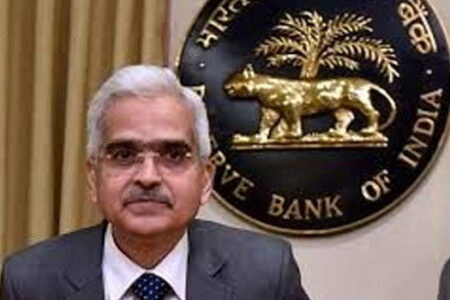Every economist and financial sector analyst has been busy discussing the 11th letter in the English alphabet ahead of the February Budget – K.
The focus is on the K-shaped, or two-speed, recovery. While corporate profitability, record exports, flow of foreign direct investment and a buoyant stock market (till recently) signal the benefits that the affluent income class and industries have been enjoying, there is no end to the sufferings of the lowly paid workers, farmers, and small and medium businesses.
Everyone wants Finance Minister Nirmala Sitharaman to address this in her Budget tomorrow. Apart from an ambitious ~6 trillion asset monetisation plan over four years between FY22 and FY25, and a ~1.02 trillion national infrastructure pipeline to be built in five years by FY25 (announced by Prime Minister Narendra Modi in his 2019 Independence Day speech), her last Budget earned kudos for accounting transparency and junking the practice of concealing the reality of fiscal deficit by showing the Food Corporation of India’s dues below the line. The primary reason behind the rise in fiscal deficit is correcting this anomaly, more than the spending to fight the Covid pandemic.
As a bonus, the last Budget also promised a slew of reforms, including redefining small and medium enterprises, the privatisation of two public sector banks and taking Life Insurance Corporation (LIC) to public, among others.
How many such plans have translated into action? There are signs of recovery in different segments but how many promises have been kept? Will the finance minister’s predicament be:
The signs of recovery are lovely, bright and deep,
Still I have many promises to keep,
And miles to go before I sleep,
And miles to go before I sleep.
(With due apology to Robert Frost)
Let’s focus on some key data.
Going by the first advance estimates of the National Statistical Office, the Indian economy is expected to grow at 9.2 per cent in FY22, after contracting 7.3 per cent in FY21. Since the economy grew at 13.7 per cent in the first half (April-September) of FY22, clearly, it is losing momentum in the second. This is logical because of the base effect.
The Reserve Bank of India (RBI) has estimated the growth at 9.5 per cent in the current year. The International Monetary Fund (IMF) has cut the growth forecast to 9 per cent from 9.5 per cent, projected in October. The World Bank’s Global Economic Prospects report, released on January 11, has projected growth for the year even lower – 8.3 per cent, unchanged from the last projection in October 2021. Both IMF and World Bank, however, are bullish on the Indian economy’s growth estimates for FY23.
The last Budget had estimated the fiscal deficit for the current year at 6.8 per cent of GDP. It can be achieved. The revenue projections for FY22 were conservative. In fact, the gross tax projections in the Budget were not even 17 per cent. And, despite the recent cut, the excise duty collected from petrol has been quite high. The combination of the two should cushion the deficit projection well even though most of the privatisation and divestment programme is unlikely to materialise.
In the best case scenario, the privatisation of two banks can happen next year. The story of IDBI Bank Ltd, Bharat Petroleum Corporation Ltd and general insurance companies is no different. We are celebrating Air India’s privatisation but this has translated more to cutting losses than making money. In the best case scenario, the government may get around ~3,000 crore from this deal.
The big elephant in the room is LIC. Every effort is on for its initial public offer (IPO). If that happens – and it probably can – the FY22 fiscal deficit could be less than the estimated 6.8 per cent, probably around 6.5 per cent. Even if the IPO doesn’t materialise, the deficit figure won’t be widely off the mark – between 6.5 per cent and 6.9 per cent.
Shall we see a firm fiscal consolidation path for FY23? No, but the deficit will certainly be less than the current fiscal’s. In the best case scenario, it can be below 6 per cent. Analyst estimates vary between 5.8 per cent and 6.3 per cent.
That brings us to the next important data point: The amount of the government borrowing programme. In the current fiscal year, net borrowing has been ~9 trillion – slightly lower than the budgeted ~9.4 trillion – and it will be achieved. This is despite the government absorbing ~1.59 trillion goods and services tax (GST) compensation transferred to states within its scheduled borrowing calendar.
For the next fiscal year, the gross borrowing programme is expected to be ~12.25 to ~13.25 trillion. Assuming the government conducts a few switch operations – a mechanism through which it replaces existing shorter duration sovereign securities with long-term papers – the net borrowing programme could be around the same level as in FY22 or marginally lower.
What about the state government borrowings? In the current year, it’s around ~7.7 trillion. Theoretically, it can rise as the compensation agreement for any shortfall in the GST between the Centre and the states ends in June 2022. From July, the Centre is under no obligation to take care of the shortfall for states. But it has not yet cleared all its dues and hence the arrangement could continue beyond June to deal with the residual dues to states. So, there may not be much change in the states’ borrowing programme.
The rationalisation of the GST structure has long been pending but that’s a different issue. There is scope for smart manoeuvring here. For instance, of the four slabs, two – of 12 per cent and 18 per cent – can be clubbed into one. This will reduce the slabs but lead to higher effective tax yield. Currently, around 500 services and at least 1,300 products fall under four major GST slabs.
Will it be easy for the RBI to manage the borrowing programme? Won’t that crowd out corporate and retail demand for credit? So far, it hasn’t done so since the credit demand has been tepid. But bankers have started seeing signs of corporate demand for credit. This is why efforts are on to get India into the global bond indices.
Its inclusion in such indices will lead to the flow of foreign money into the bond market, lifting their prices and lowering the borrowing cost of the government. This will also have a positive impact on the stock market, corporate bonds and local currency.
The RBI wasn’t too keen on this as any serious geopolitical event could blow off the risk premiums but the Indian central bank seems to be softening its stance. Preparing the ground, the 2020 Budget had announced allowing foreign investors to buy unlimited amounts of select government bonds via the fully accessible route, or FAR. The contentious issue is taxation. The Euroclear platform can take care of the settlements of bond buying by international entities but how will the taxation issue be settled? Can we have two sets of taxes – capital gains and withholding tax? Serious efforts are on to sort this out.
A week after the Budget, the RBI will announce its last monetary policy of FY22 against the backdrop of the US Federal Reserve, in its battle to tame inflation, set it to increase interest rates in March and ending its bond purchase programme. Let’s discuss that next Monday.



